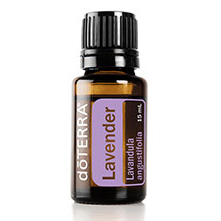dōTERRA
Lavender
Lavender
Couldn't load pickup availability
Description
Lavender oil has been used and cherished for centuries for its unmistakable aroma and myriad benefits. In ancient times, the Egyptians and Romans used Lavender for bathing, relaxation, cooking, and as a perfume. Its calming and relaxing qualities, when taken internally, continue to be Lavender’s most notable attributes. Applied topically, Lavender oil is frequently used to reduce the appearance of skin imperfections. Add to bath water to soak away stress or apply to the temples and the back of the neck. Add a few drops of Lavender oil to pillows, bedding, or bottoms of feet to relax and prepare for a restful night’s sleep. Due to Lavender’s versatile properties, it is considered the must-have oil to have on hand at all times.
Uses
- Add a few drops of Lavender to pillows, bedding, or bottoms of feet at bedtime.
- Keep a bottle of Lavender on hand to soothe occasional skin irritations.
- Freshen your linen closet, mattress, car, or the air by combining Lavender with water in a spray bottle.
- Take internally to help soothe and relax the mind.*
- Use in cooking to soften citrus flavors and add a flavorful twist to marinades, baked goods, and desserts.
Directions for Use
Diffusion: Use three to four drops in the diffuser of your choice.
Internal use: Dilute one drop in 4 fl. oz. of liquid.
Topical use: Apply one to two drops to desired area. Dilute with a carrier oil to minimize any skin sensitivity. See additional precautions below.
This oil is Kosher certified.
Cautions
Possible skin sensitivity. Keep out of reach of children. If you are pregnant, nursing, or under a doctor’s care, consult your physician. Avoid contact with eyes, inner ears, and sensitive areas.
Primary Benefits
- Soothes occasional skin irritations
- Taken internally, Lavender oil reduces anxious feelings and promotes peaceful sleep*
- Helps ease feelings of tension when used internally*
Aromatic Description
Powdery, floral, light
Collection Method
Steam distillation
Plant Part
Flower
Main Constituents
Linalool, Linalyl acetate, Ocimene



